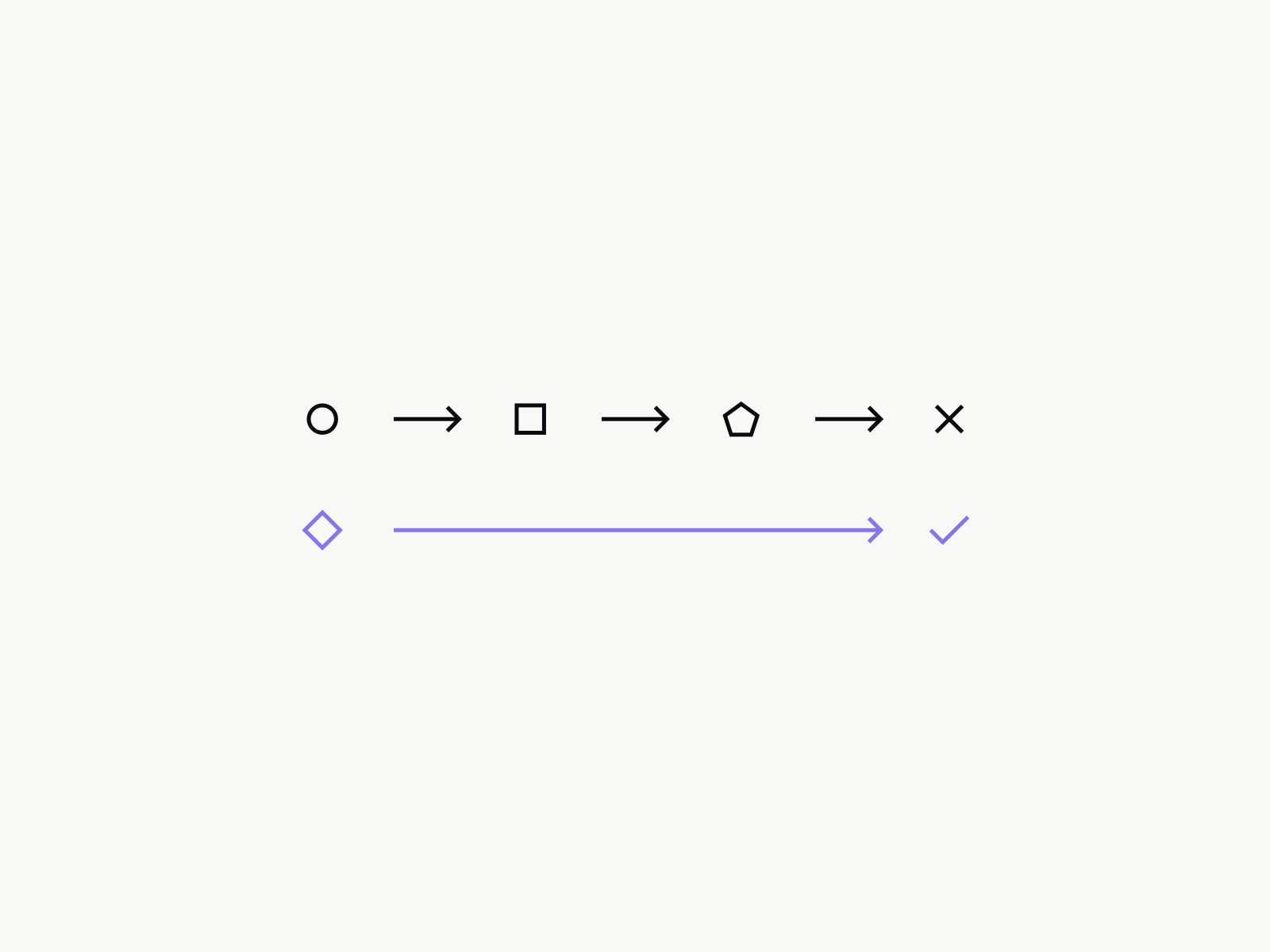
Design trends have become hugely widespread in recent years. I’m sure you’ve seen loads of hyped-up articles on how to use these trends to make your work or your business look as trendy and hip as possible. However, these trends are rarely what’s right for your business.
What happened to informed design, tailored to customer needs?
Over the past few years, I have noticed clear trends and styles in graphic design. There are vast resources and sources where you can get inspiration and references on what is moving in the visual sphere. Newspapers, amateur bloggers, Instagram influencers, and every other designer out there are looking to create lists that try to specify what has been trendy in graphic design in the past year, and also try to predict what will be fashionable in the time to come. That’s a problem. Especially when it comes to designing visual identities and brands.
Flared trousers are back, Y2K is popular again, and I’m sure you’ve seen at least a dozen of the blob-human illustration style that every brand and their mother seem to use these days. Trends are subject to constant evolution. They are short-lived. After all, that’s what makes them trends.

These illustrations are everywhere. (Humaaans by Pablo Stanley)
A visual identity, on the other hand, is a long-term investment. Brands have a lifespan that extends well beyond the timeline of a trend, often decades. There is so much uncertainty about whether trends are here to stay or if they’re just trends. The risk you take by jumping on a trend in the hope that it will be “cool” in ten years is significant.
Branding is a comprehensive process and a significant economic investment. My advice is not to put the money into something just because it is timely, but rather bet on what is timeless. Then you know that investment will bring you joy for years to come, not just right now.
A trend should not determine how you or your business looks. Design is a business tool, and it should be used to highlight a company’s unique culture, product, mindset, and soul. Identity is, by definition, what makes you unique, who you are, and what sets you apart from others. Too much focus on trends in developing a visual identity could, ironically, make you seem just like everybody else. Ordinary. Bland.
On the other hand, trends are not entirely a waste of time. As mentioned, I’m fully aware of the existence of design trends, and I do follow them to some degree. Trends can be a great tool to use in short-term campaigns or events or even websites. Using trends in short-lived designs is a way to show that a company stays up to date. Just remember to not stray too far away from the foundation of your visual identity if you decide to do so.
To sum it up, there are places where design trends can live, namely in campaigns that will at some point expire, just like trends do. Brands, on the other hand, should have a longer shelf-life. It does not necessarily mean that brands never expire – a brand needs occasional updates because the target audience is growing or developing. But there is no room for trends. I see that as a lazy solution in an attempt to stay relevant, and will usually not be compatible with the values and identity of the brand itself.